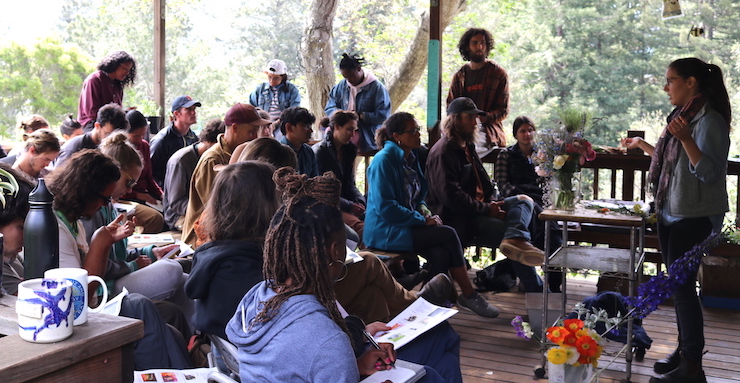Resources for Using Self-Assessment as a Learning and Evaluation Strategy
Self-assessment is when learners assess their own performance or skills in order to make desired improvements (McMillan & Hearn, 2008). Self-assessment in beginning farmer programs can help improve learning outcomes for participants and serve programs as an evaluation tool. More specifically, it can help beginning farmers and ranchers (BFR) more clearly identify their learning needs at the beginning of a program, create their own learning plans to meet these needs, and monitor changes in their knowledge and skills over time. Self-assessment can help BFR training programs learn how they might strengthen their programming, and provide information about the extent of farmer skill development to share with funders and other program stakeholders. GREW offers several resources for learning more about, and utilizing, self-assessment in BFR programs. These resources are outlined below.
Self-Assessment Webinar
In December 2020, GREW hosted a webinar titled Self-Assessment for Evaluation and Enhanced Learning: Using and Adapting the Business Health Assessment and the Refugee & Immigrant Participatory Benchmarking Tool. The recording and slides are accessible on the GREW past webinar archive.
This webinar provides two examples about how organizations have approached creating and using self-assessment tools. Gary Matteson from the Farm Credit Council shares about the Business Health Assessment (BHA). The BHA has been developed specifically to help beginning farmers identify their strengths, as well as learning needs, to help them stay in business. Elizabeth Moore of Trees for the Future shares about the development and use of the International Rescue Committee’s Participatory Benchmarking Tool, a self-assessment process specifically developed for working with immigrant and refugee beginning farmers from a variety of cultures and in different languages. She covers how the instrument is implemented, analyzed, and used for learning and evaluation reporting.
Self-Assessment Examples in the GREW Library
The GREW Project has a number of self-assessment examples that can be used, modified, or that can provide inspiration for developing your own tool.
- Cornell Small Farms Program Assessing Skills and Competencies
- Intervale Incubator Farm Self-Evaluation
- San Juan Ranch Skills Checklist
- Farm Credit Council
- The Food Group
- Colorado State University Extension
Resources
The resources below may be helpful for developing self-assessment tools for learners in beginning farmer programs.
Galt, R.E., Parr, D., Jagnnath, J. (2012). Facilitating competency development in sustainable agriculture and food systems education: A self-assessment approach. International Journal of Agricultural Sustainability. https://www.researchgate.net/publication/254218224_Facilitating_competency_development_in_sustainable_agriculture_and_food_systems_education_A_self-assessment_approach
Galt, R.E., Parr, D., Van Soelen Kim, J., Beckett, J., Lickter, M., Ballard, H. (2012). Transformative food systems education in a land-grant college of agriculture: The importance of learner-centered inquires. Agriculture and Human Values. https://link.springer.com/article/10.1007/s10460-012-9384-8
Dreyfus, S. E., & Dreyfus, H. L. (1980). A five-stage model of the mental activities involved in directed skill acquisition (No. ORC-80-2). California Univ Berkeley Operations Research Center. https://www.researchgate.net/publication/235125013_A_Five-Stage_Model_of_the_Mental_Activities_Involved_in_Directed_Skill_Acquisition
References
McMillan, J. H., & Hearn, J. (2008). Student self-assessment: The key to stronger student motivation and higher achievement. Educational Horizons, 87(1), 40-49.

